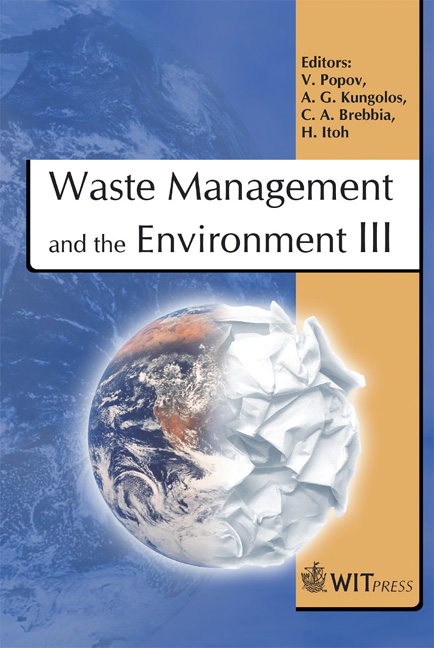Effect Of Ferrous Iron On The Settling Properties Of Granular Sludge In A UASB Reactor
Price
Free (open access)
Transaction
Volume
92
Pages
9
Published
2006
Size
481 kb
Paper DOI
10.2495/WM060181
Copyright
WIT Press
Author(s)
Α. Vlyssides, E. M. Barampouti, S. Mai & A. Moutsatsou
Abstract
The effect of ferrous ion addition on the settling properties of the granules in an upflow anaerobic sludge blanket (UASB) reactor was investigated. A UASB reactor (35ºC; pH=7) was operated for 3 months at a 20-h hydraulic retention time (HRT) at organic load from 2,0 to 20,0 gCOD.L-1.d-1. Ferrous iron as FeSO4 .7H2O was fed to the reactor in a range of load from 0,03 to 0,28 g Fe+2.L-1.d-1. After steady state conditions were achieved, the settling properties of granular sludge from the anaerobic sludge bed reactor were determined by using a novel upflow velocity test. From the results, it was concluded that iron promoted granulation. The U10% (10% of sludge washed out by applying upflow velocity U10%) was increased from 0,23 m.h-1 to 13,21 m.h-1, while U30% from 0,87 m.h-1 to 29,11 m.h-1 and U60% from 6,63 m.h-1 to 49,82 m.h-1. Keywords: UASB, granulation, ferrous iron, settling properties. 1 Introduction The concept of the upflow anaerobic sludge blanket (UASB) reactor was developed in 1970s. Today the UASB reactor has become the most popular highrate reactor for anaerobic treatment of wastewater throughout the world [1, 2]. The UASB reactor has been used increasingly in recent years to treat a variety of industrial waste and municipal waste. The treatment capacity of UASB reactors depends on the amount of active biomass retained, as well as the contact between biomass and wastewater. The biosolids inside the UASB reactor can be either in granular or flocculent form [3]. Retention of an adequate level of methanogenic bacteria in UASB reactors gives good performance in terms of chemical oxygen demand (COD) removal and methane yield [1, 4].
Keywords
UASB, granulation, ferrous iron, settling properties.





